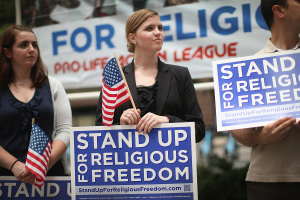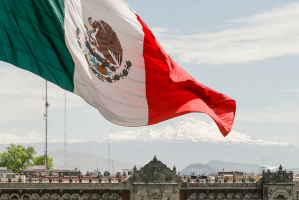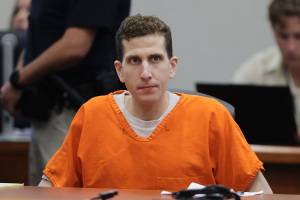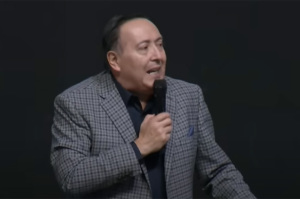John MacArthur Burning the Bridges Between Cessationists, Continuationists and Traditionalists and Charismatics (Pt. 2)
John MacArthur and his Strange Fire conference bring to mind the bombing runs by World War 2 flyers on bridges their enemies might have used strategically.
The river-spans had to come down.
MacArthur seems equally passionate about no bridges between cessationists and continuationists, traditionalists and charismatics. After all, in his view – based largely, apparently, on the extremes of the charismatic movement – "nothing good has come out of the charismatic movement that is attributable to charismatic theology."
This is take-no-prisoners, leave-no-bridges talk.
Charismatics could just as easily say that in light of non-charismatic extremists like Bishop Joseph Mueller (Lutheran leader of the Nazi-appeasing Deutsche Christen), Father Charles Coughlin (the 1930s Catholic hate-preacher), Ian Paisley (the conflict-stoking Northern Ireland Presbyterian), and Thomas Altizer (professor at Methodist Emory University, and instigator of the 1960s God-is-dead theology), "nothing good has come out of the non-charismatic movement that is attributable to non-charismatic theology."
Back in dreamy days I had a perhaps naïve hope: people in the body of Christ leaving extreme polarities, crossing the bridge toward Christ-centeredness, and discovering they could love and learn from one another.
I was trekking over from what I have termed the non-charismatic "Form" position. I recognized that while I might not embrace all in charismatic theology – especially the "Frenzy" extremity – I needed more openness to the Holy Spirit's work in my life and church.
Meanwhile I spied some good folk approaching from the other side. I got excited. We might find the place where we could "all come to the unity of the faith and of the knowledge of the Son of God, to a perfect man, to the measure of the stature of the fullness of Christ; that we should no longer be children, tossed to and fro and carried about with every wind of doctrine, by the trickery of men, in the cunning craftiness of deceitful plotting, but, speaking the truth in love, may grow up in all things into Him who is the head - Christ - from whom the whole body, joined and knit together by what every joint supplies, according to the effective working by which every part does its share, causes growth of the body for the edifying of itself in love." (Ephesians 4:13-16 NKJV)
In the late 1970s when I was trying to lead the traditional evangelical church where I was pastor to venture a little way out along the bridge, a member asked me: "Pastor, where are you taking our church?"
"Great question," I answered. That's when I began a personal study that led me to coin the terms describing theological and spiritual extremes (neither of which I wanted to pursue then or now) – "Form" and "Frenzy" – and write a small book on the topic.
Form theology focuses heavily on God's transcendence. In the far extreme, God becomes so far "beyond" us that He fades from view and engagement. Deism and the God-is-dead movement of the 1960s are cases in point.
Frenzy at its outer limits stresses God's immanence to the point He becomes our valet, fetching us healing on demand, prime parking places, gold fillings, and lots of bling. In the far, far extreme, God is so immanent, so close, we are God. Think Shirley MacLaine-style "spirituality" and even the mystical cosmic union of Nirvana religions.
Form religion is about structural control in belief and expression, and Frenzy at its outermost plunges into theological and spiritual anarchy.
At its farthest edge Form is characterized by unbelief regarding the miraculous. Form liberals and Form fundamentalists share the same odd nexus: the liberals believe the miracles never happened and the Form cessationists believe they are not happening now. Either way, they come out at the same place.
If Form is unbelieving, outer-limits Frenzy too often suffers from gullibility, even to the point of thinking that barking like a dog or sitting under a sprinkle of gold dust or sensing the slightest intuitive tremor is the work of the Holy Spirit.
For the extreme of Form faith is static, "barren orthodoxy" (to borrow a term from John Stott referencing the dynamic faith of James 2). This Form orthodoxy can be that of the theological left or right – each has its rigid systems.
Frenzy edge-walkers see faith as formulaic. The only way to move faith from its stasis is to whip it up emotionally, many believe.
The extreme of Form, then, is primarily mind-rationalism focused. Frenzy in the utmost is emotions-feeling. Frenzy may come perilously close to Eastern mysticism, but Form in its far extremes is Western rationalism theologically encapsulated.
There are many other contrasts between the polarities of Form and Frenzy – too many to list here. After all, both positions have been growing for centuries. The forebears of Form include the Pharisees and Sadducees. The Sadducees (the "liberal Form" side) questioned doctrines like the Resurrection, and wanted to open the doors of Judaism to the spirit of the age and the authority of culture. Admirably, the Pharisees (the "fundamentalist Form" side) sought to protect scriptural authority, but, not so admirably, became rigid and closed, and sometimes downright mean, as Jesus pointed out frequently.
A DNA check might show that Montanists are the theological and spiritual ancestors of the Frenzy extreme. Montanus, a late 2nd century preacher, launched a movement known as the "New Prophecy", tagged by later historians as Montanism. Eusebius, classic historian of the early church, wrote that Montanus "became beside himself, and being suddenly in a sort of frenzy and ecstasy, he raved and began to babble, and utter strange things, prophesying in a manner contrary to the constant custom of the Church handed down by tradition from the beginning." Ultimately Montanus even intimated that he was the incarnation of the Paraclete, the Holy Spirit.
Considering the distance between Form and Frenzy, it would take a miracle to get the two sides closer to the meeting point – and now John MacArthur seems intent on blowing up the bridge.
Maybe we can't all go out to the center of what's left of the bridge, hug and sing Kum Ba Yah. But perhaps we can see that the state of our culture provides unprecedented opportunity for the contemporary church – like that of the church in 1st century Rome – and maybe we all ought to run out to Jesus before we blow this strategic historic moment.
Perhaps there we can see what balance looks like and how we get there and stay there – the topic of the final installment of this series.





























